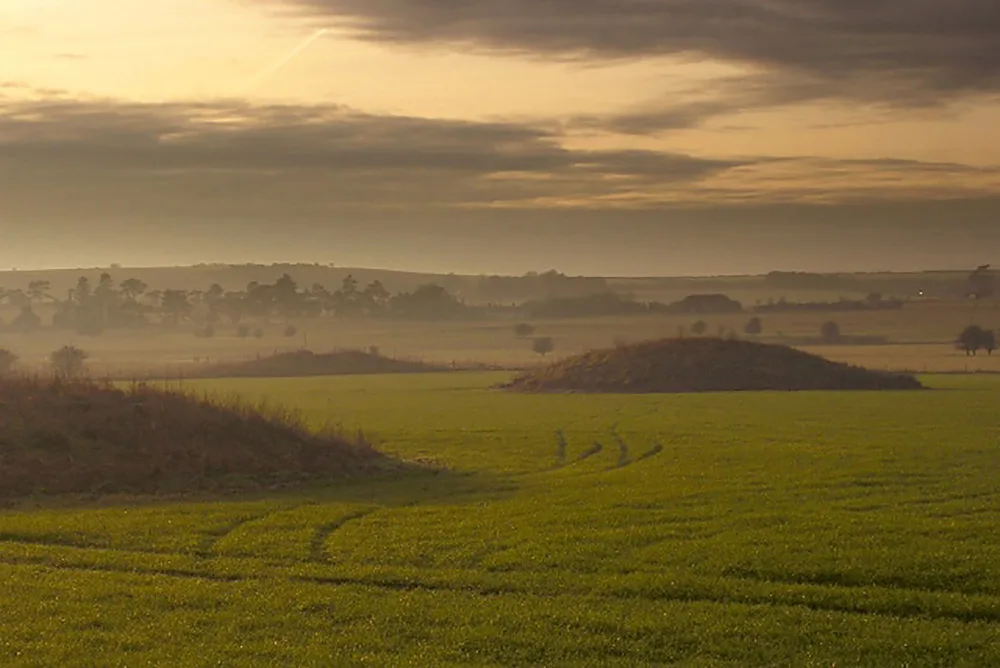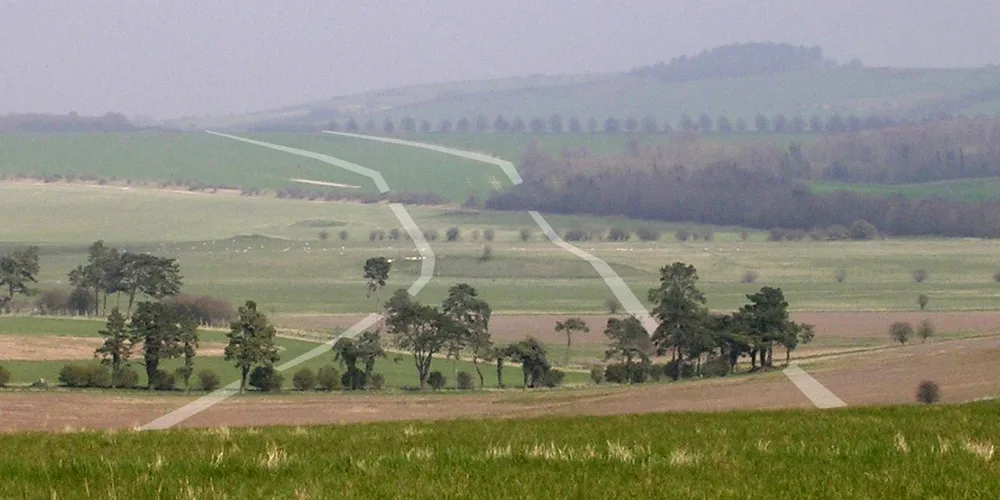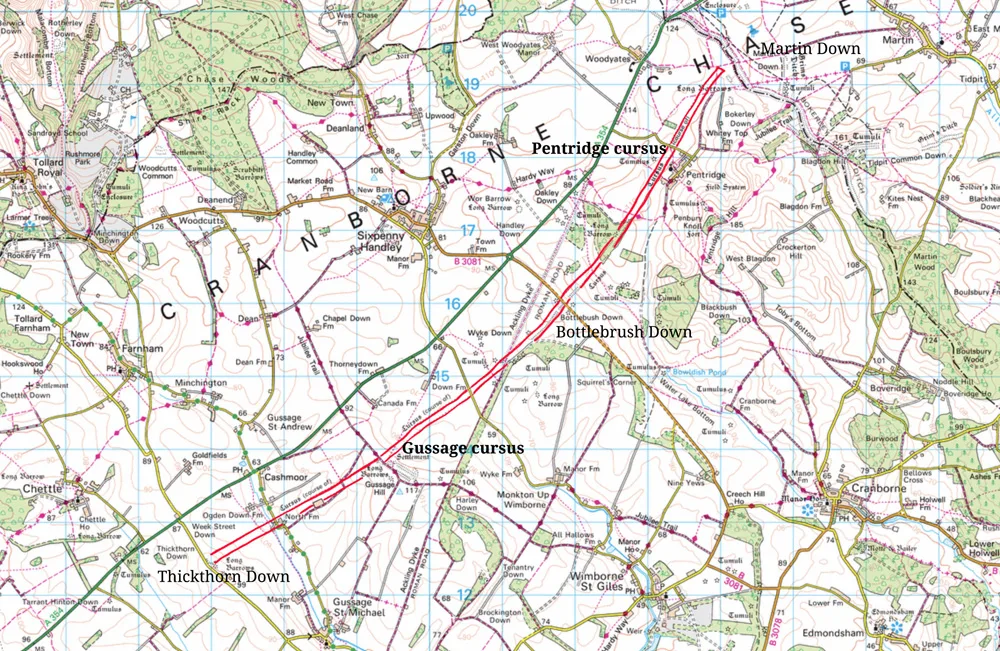Exploring Britain’s largest Neolithic monument, stretching across six miles of Cranborne Chase, with Dorset CPRE’s Rupert Hardy

Built around 3,300 BC – predating Stonehenge by centuries – the Dorset Cursus is also three times its size. The term “Cursus” was coined by 18th-century antiquary William Stukeley, who first believed these long, narrow structures were ancient Roman racetracks. We now know they were Neolithic ritual sites, constructed long before the Romans arrived.Evidence of even earlier activity has been found on the Dorset Cursus, with Mesolithic flint scatter discovered along several sections. Much of the site was hidden until aerial photography revealed it in the 20th century, and the Cursus is still best appreciated from above, as little remains visible from the ground. It is a rectangular enclosure, consisting of parallel banks about 1.5 metres high, spaced approximately 82 metres apart, with external ditches 1.5 metres deep.

Constructing the Cursus was a monumental task. More than six million cubic feet of chalk were removed using a combination of stone, wood, and antler tools – along with a significant amount of human labour. While much of the monument is now hidden, the banks remain visible in a few places, such as Oakley Down near Sixpenny Handley and Bottlebrush Down. Of the terminals, only the one at Thickthorn Down, northwest of Gussage St Michael, remains intact; the terminal at Martin Down has been lost to ploughing. The Cursus is believed to have been constructed as a grand avenue linking long barrows. While other cursus monuments exist across Britain, none match the size of the Dorset Cursus, which is also unique in that it runs perpendicular to the local topography. Spanning two ridges and three river valleys, it was likely built in sections, which accounts for its slightly curved path. The first section ran from Thickthorn Down to Bottlebrush Down – sometimes referred to as the Gussage Cursus – and the second stretched from Bottlebrush to Martin Down via the Allen Valley. Evidence suggests a third Cursus may have existed at the northern end, running at a right angle and aligned with two long barrows.

Significance and interpretation
The Dorset Cursus probably had a ceremonial purpose, possibly connected to solar rituals or funeral practices. Archaeologist Richard Bradley called it the Avenue of the Dead, suggesting it may have been believed to guide the spirits of the deceased. He theorised that those wishing to communicate with the dead could meet them on the avenue.
The massive scale of the Cursus and its surrounding earthworks indicate it was carefully designed with symbolic meaning. One of the most striking features is how the Gussage Cursus aligns with the sun at the mid-winter solstice – people gathered at the Bottlebrush terminal could have witnessed the sun setting behind the long barrow on Gussage Down. Enthusiasts still gather on 21st December for this magical experience, especially if the weather is sunny.
While there is limited direct evidence of ceremonial practices, the discovery of human bones suggests the site was used for excarnation – a practice of leaving bodies to decompose naturally.
An intriguing theory suggests that the Great Cursus at Stonehenge was used to observe two stars, with processions taking place between their setting and rising. This idea of astronomical alignment could also apply to the Dorset Cursus, which may have served as a platform for viewing celestial events.
The local archaeologist most closely associated with the Cursus is Martin Green, who has excavated a section of it on his land at Down Farm. Dorset CPRE has organized several visits to Down Farm, where groups of six or more are welcome at his museum*. He also leads tours of the prehistoric sites on the farm, which I highly recommend. Last year, Martin and others organized a week-long event focusing on the archaeology and history of the Cursus, as well as the culture of our Neolithic ancestors. Martin’s early mentor, Richard Bradley, wrote The Dorset Cursus: The Archaeology of the Enigmatic (now out of print, but still available online), and Martin’s own excellent book, A Landscape Revealed, on the history of his farm and the Cranborne Chase, is still available.
Musician Ashley Hutchings, inspired by the Cursus, wrote an evocative song celebrating its connection to our landscape and ancient past:
“When Stukeley to the Cursus came
Low down in hallowed ground,
A Roman race track gave its name,
Low down are secrets found.
For six long miles it stretches west,
Low down in hallowed ground,
And ancient warriors take their rest,
Low down are secrets found…”
For more details, contact Martin at [email protected]


